ChatGPT Training Tips: How to Fully Leverage the Potential of Your AI Assistant

In today's rapidly evolving landscape of artificial intelligence, ChatGPT, as a powerful AI language model, is changing the way we interact with technology. However, simply asking questions is far from sufficient to fully harness the potential of ChatGPT. In this blog post, we will detail eight key tips for using ChatGPT, helping you obtain more precise and valuable responses.
Tools used in the article: XXAI
1. Have Clear Goals and Provide Necessary Background Informatio
Before engaging in conversation with ChatGPT, it is crucial to clearly define your goals. What information are you looking for? What problem do you expect to solve? Providing necessary background information will help ChatGPT better understand your needs.
For example, if you want to learn about the applications of artificial intelligence and machine learning, you might ask: "As a software engineer, I am researching the applications of artificial intelligence and machine learning in software development. Can you summarize the major technological breakthroughs in these two fields over the past year and their impact on software development processes and efficiency?"
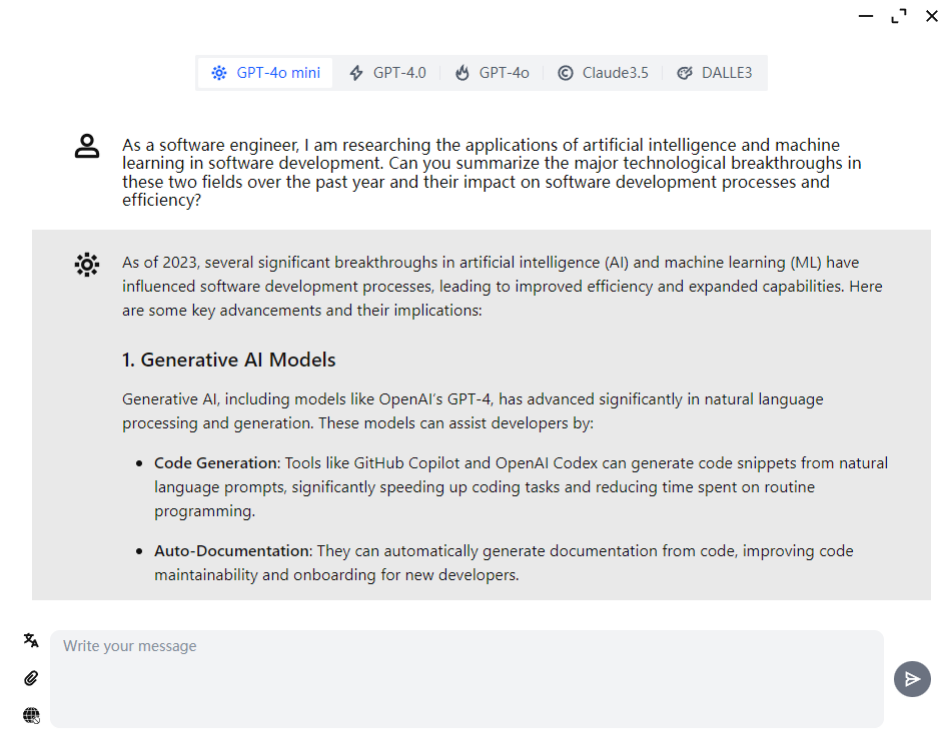

Such questions not only clarify your identity and purpose but also specify timeframes and types of interest, allowing ChatGPT to provide more accurate and targeted responses.
2. Avoid Ambiguous and Vague Terms
Using specific and clear language is essential when engaging with ChatGPT. Avoid vague or ambiguous terms that may lead to confusion. The more specific your question, the more accurate the answer you can expect.
For instance, rather than asking, "How can I improve work efficiency?" you could say, "As a software engineer, what specific time management techniques can help me improve efficiency in my daily coding work? Please list 5-7 practical tips."
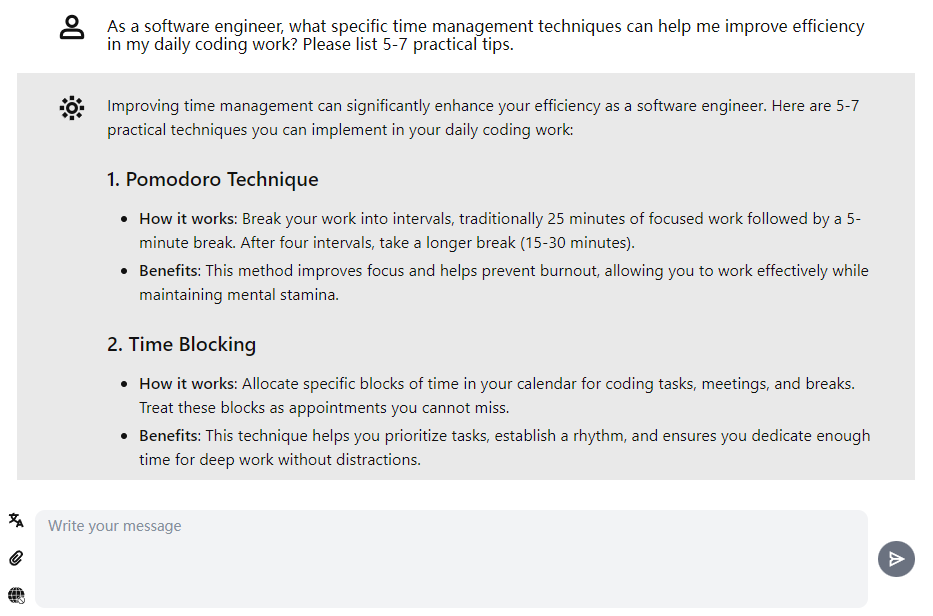

This question specifies your professional background and the number and type of suggestions you need, significantly improving the relevance and practicality of the response.
3. Employ the "Five Whys"
The "Five Whys" is an iterative inquiry technique that explores the root cause of a problem by consecutively asking "why" five times. This method helps you look beyond surface issues and gain a deeper understanding, leading to more effective solutions.
For example:
Initial question: "My team's work efficiency seems to have decreased recently."
Five Why:
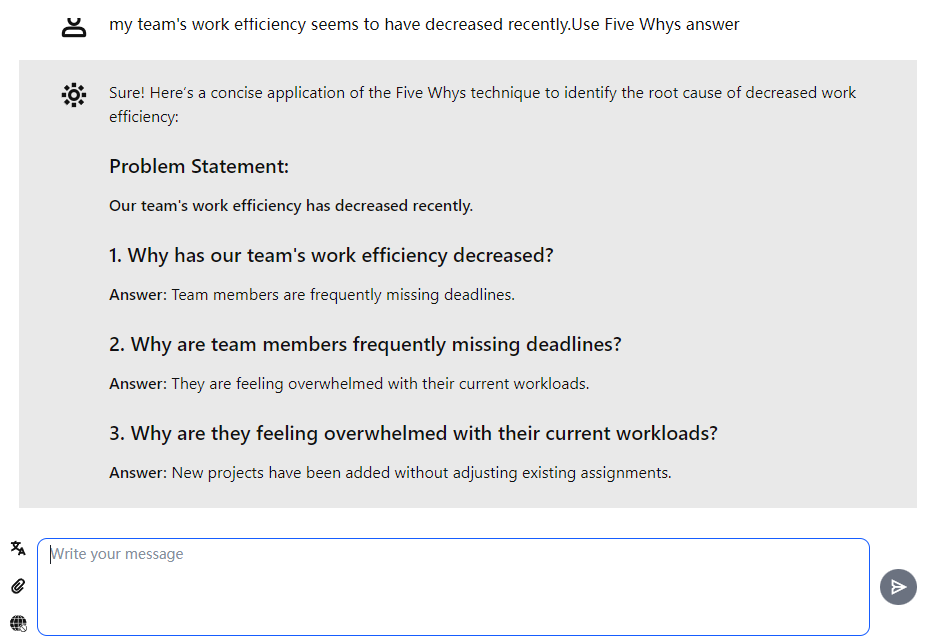

By adeptly employing the "Five Whys" technique, you can guide ChatGPT to provide more insightful and in-depth responses, helping you better grasp the essence of the complex issue and find more effective solutions. This method is applicable not only in work-related problem-solving but also in personal life, learning, and decision-making processes.
4. Utilize Comparative Analysis from Different Perspectives
Comparative analysis is a powerful thinking tool that can help us better understand the similarities and differences between things. When using ChatGPT, asking it to perform a comparative analysis can yield more comprehensive and in-depth insights.
For example, you could ask:"Please compare and analyze the pros and cons of local databases versus cloud databases in the following aspects:
1.Performance
2.Cost
3.Security
4.Scalability
5.Data Backup and Recovery.
Please provide specific data support where applicable."
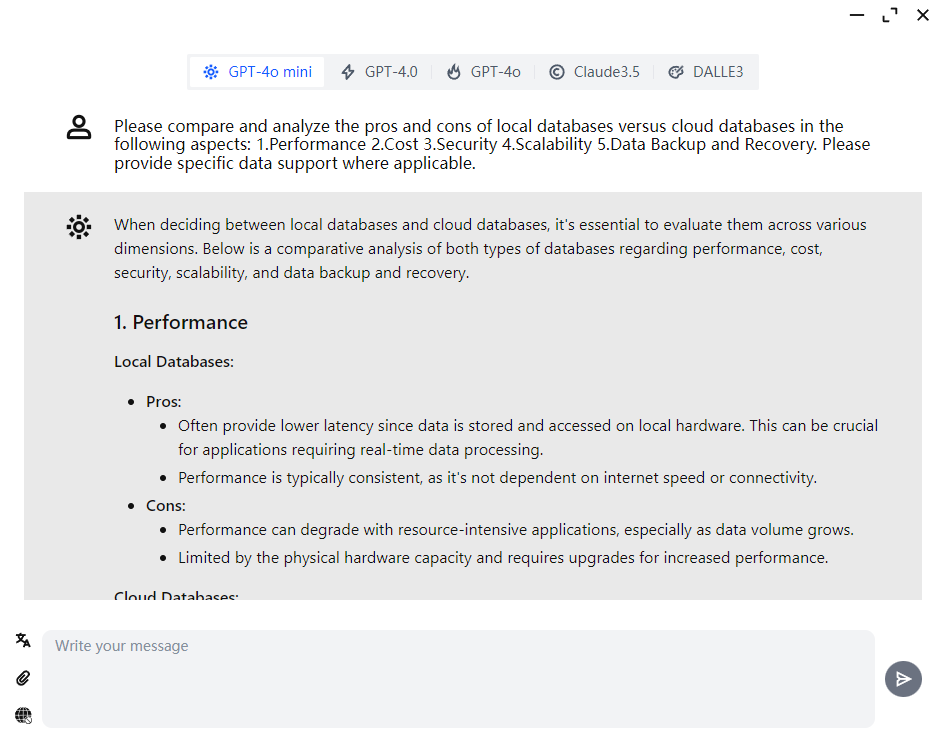

This approach not only provides a detailed comparison of the two database solutions but also presents data-supported analysis, aiding in informed decision-making. By comparing various aspects, you can identify the most suitable database solution for specific application scenarios or project requirements. Additionally, data-supported analysis enhances the objectivity of the decision-making process, helping the team understand the performance, cost-effectiveness, security, and manageability of different databases, thereby optimizing architectural design and implementation strategies.
5. Provide Specific Context Information
Providing specific context and background information to ChatGPT significantly enhances the relevance and practicality of the responses. This method is particularly useful when seeking advice or solutions.
For instance, you could say, "I am a 30-year-old software engineer who will share my technical experience from project development in a team meeting this month. I have never shared theoretical knowledge or spoken in a team setting before. Considering my experience and specific situation, can you offer 5 specific suggestions on how to make my theoretical knowledge more accessible during my presentation?"
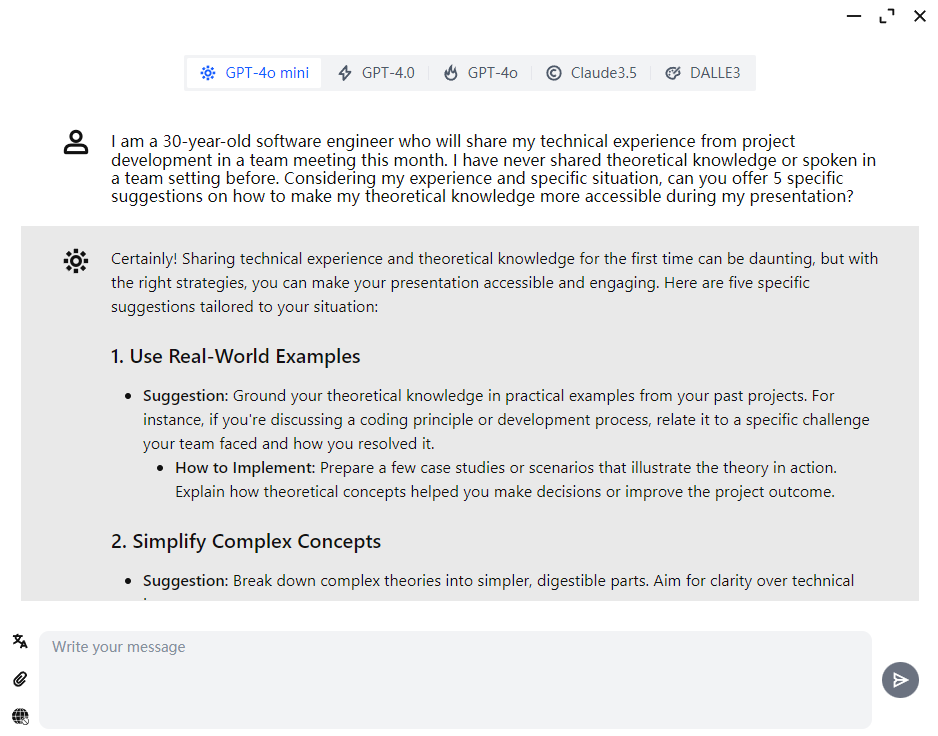

By giving these details, ChatGPT can provide more personalized and practical recommendations, rather than generic advice.
6. Regularly Summarize and Review
In lengthy or complex discussions, it is helpful to periodically ask ChatGPT to summarize previous conversations. This not only ensures that both parties are on the same page but also helps organize thoughts for the next steps.
You might request: "We have discussed various aspects of artificial intelligence and machine learning. Could you summarize the key points we’ve discussed so far? Please list them in concise bullet points."*
Additionally, if you find a particular response from ChatGPT especially valuable, don’t hesitate to revisit or expand on that topic. You could say, "You just mentioned (summary) regarding artificial intelligence and machine learning, which is very interesting. Could you explain that in more detail, especially concerning (specific aspect)?"
7. Use Chain Thinking for Guidance
Chain thinking is a structured problem-solving approach that helps ChatGPT reason step-by-step to reach more thoughtful conclusions. This method is particularly useful for analyzing complex issues.
For example, if you want to analyze a business decision, you could guide ChatGPT as follows:
First, list all the direct impacts this decision may have.
Then, for each direct impact, analyze the potential secondary impacts.
Next, evaluate how these impacts manifest differently in the short term, medium term, and long term. Based on this analysis, weigh the pros and cons and provide an initial recommendation.
Finally, consider the possible risks and uncertainties, and suggest mitigation strategies.*
Through this systematic thought process, you can achieve a more comprehensive and in-depth analysis.
8. Specify Output Format
Clearly specifying the format you expect for the response can greatly improve the readability and practicality of the information. Depending on your needs, you may ask ChatGPT to present information in a list, table, outline, or another specific format.
For instance: "Please summarize the ten most important inventions in artificial intelligence from the 20th century as follows:
Invention Name (Year)
Major Contribution
Social Impact
Key Inventor/Team"
This approach not only structures the information better but also makes it easier for later reference and use.
Conclusion
By mastering these ChatGPT training tips, you will be able to utilize this powerful AI tool more effectively. Remember, interacting with ChatGPT is a two-way process. By providing clear and specific instructions and background information, you will not only receive more relevant and valuable responses but also continuously improve your questioning and analytical skills.
With practice and experience, you will find yourself more adept at applying these techniques, transforming ChatGPT into a truly powerful smart assistant that helps you achieve greater success in your work and learning. Whether solving complex problems, acquiring professional knowledge, or sparking creative inspiration, ChatGPT will become an indispensable ally in your endeavors.